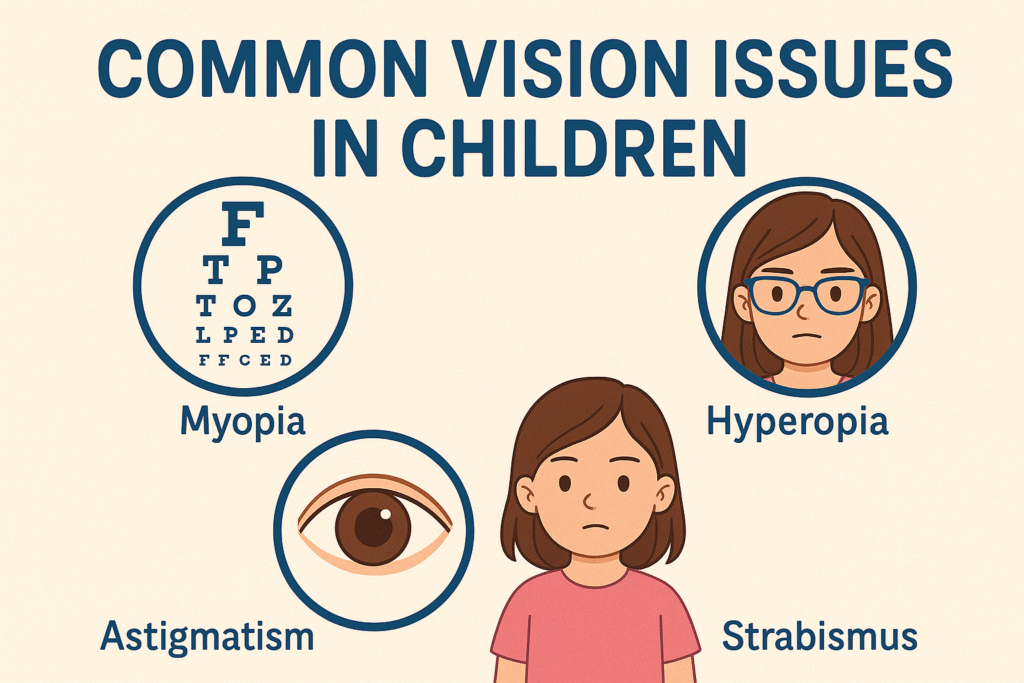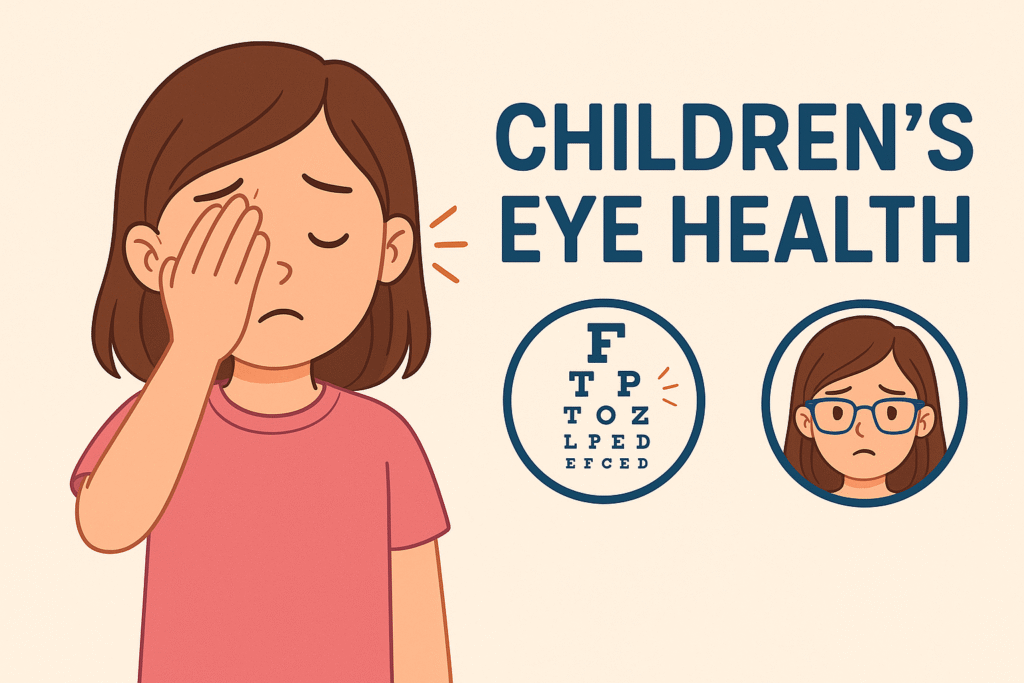Good vision is key to a child’s development, supporting their learning, communication, daily activities, and motor skill progression. Yet, many vision issues in children can go unnoticed because they may not realise or communicate that something is wrong. That’s why early detection is key.
This guide explores how parents and caregivers can recognise early signs of eye problems, why regular eye test in Cambridge appointments are essential, and what steps to take if concerns arise.
Why Good Vision Matters in Early Childhood
A child’s sight is one of their most essential tools for discovering and making sense of their surroundings. Their eyes support every growth stage from identifying shapes and colours to reading and playing. Poor vision can affect:
- Academic performance
- Attention span
- Confidence and social interaction
- Motor skills and coordination
Early intervention helps to correct issues before they impact long-term development.
Common Vision Issues in Children

While many children have no eye problems, certain conditions are more likely to emerge in the early years. These include:
- Short-sightedness (myopia): Difficulty seeing distant objects clearly
- Long-sightedness (hyperopia): Trouble focusing on close-up tasks like reading
- Astigmatism: Vision may appear fuzzy or skewed because of an uneven curve in the eye’s surface.
- Lazy eye (amblyopia): One eye develops weaker vision than the other
- Strabismus (squint): Eyes do not align properly, often pointing in different directions
These conditions can usually be managed or corrected when identified early.
How to Spot Vision Difficulties in Children
Children often don’t realise they struggle to see clearly, so adults must watch for subtle behavioural cues. Here are some warning signs:
- Squinting or covering one eye
- Holding books or screens very close
- Frequent eye rubbing or blinking
- Complaints of headaches or tired eyes
- Tilting the head to see better
- Poor hand-eye coordination
- Difficulty concentrating at school
- Sitting too close to the television
- Steering clear of visually demanding activities like reading or doing jigsaw puzzles
If you notice any of these signs, booking a professional eye test as soon as possible is best.
When Should a Child Have an Eye Test?
Across the UK, children can access complimentary eye examinations through the NHS. If any concerns arise, it’s recommended that they have their first check around the age of 4 or earlier. Routine eye tests should be scheduled every two years or more frequently if advised by a practitioner.
Eye exams for children are quick, non-invasive, and often adapted to their age and communication level.
Importance of Early Eye Examinations
An early eye test in Cambridge or elsewhere ensures:
- Prompt diagnosis of vision issues
- Easier treatment during developmental years
- Monitoring of eye health and growth
- Improved learning and classroom engagement
Early detection is often the difference between a simple correction with glasses and long-term vision challenges.
What Happens During a Children’s Eye Test?
An optometrist trained in children’s eye care will carry out several checks, including:
- Vision testing using shapes, letters, or pictures
- Eye alignment and movement
- Focusing ability and depth perception
- Inspection of the internal eye structure
- Discussion of medical or family history
If glasses are needed, children are offered options tailored for fit, durability, and comfort.
Tips for Parents: Supporting Your Child’s Eye Health
Support your child’s vision with simple habits:
- Encourage outdoor play, which can help lower the risk of short-sightedness
- Reduce extended screen exposure and remind them to take regular eye breaks.
- Maintain a healthy, balanced diet rich in vitamin A, C, and omega-3s
- Watch for changes in their behaviour or posture
- Keep up with regular eye tests
Is There a Family History of Eye Conditions?
Some vision problems, such as myopia or strabismus, can run in families. If there is a history of eye conditions, your child may be more at risk. Let the optometrist know during the exam so they can carry out any additional checks if needed.
Early Action Makes a Big Difference
Identifying vision issues at a young age greatly improves the chances of long-term visual health.
Whether it’s noticing a squint, trouble in school, or a sudden aversion to reading, trust your instincts and seek professional advice. Scheduling a regular eye test in Cambridge or your local area ensures that your child’s vision is monitored and supported throughout the process.
Final Thoughts
Since children may not express when something’s wrong with their sight, adults must stay alert and act when needed. Most childhood vision problems can be successfully managed or corrected with regular checks and prompt treatment.

